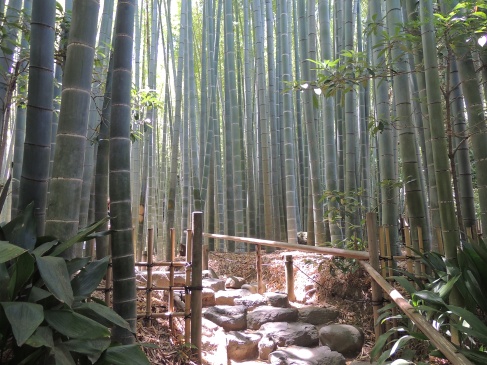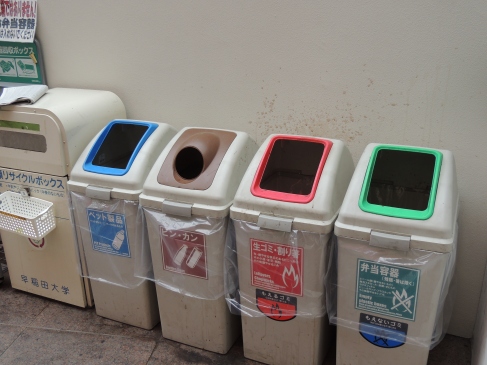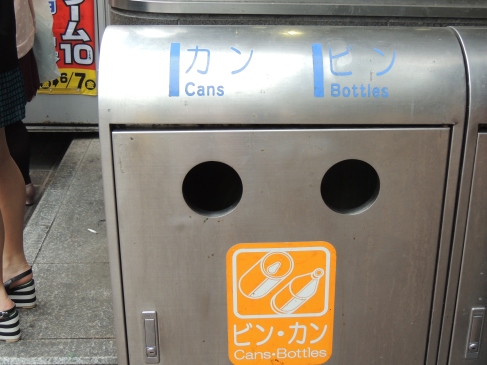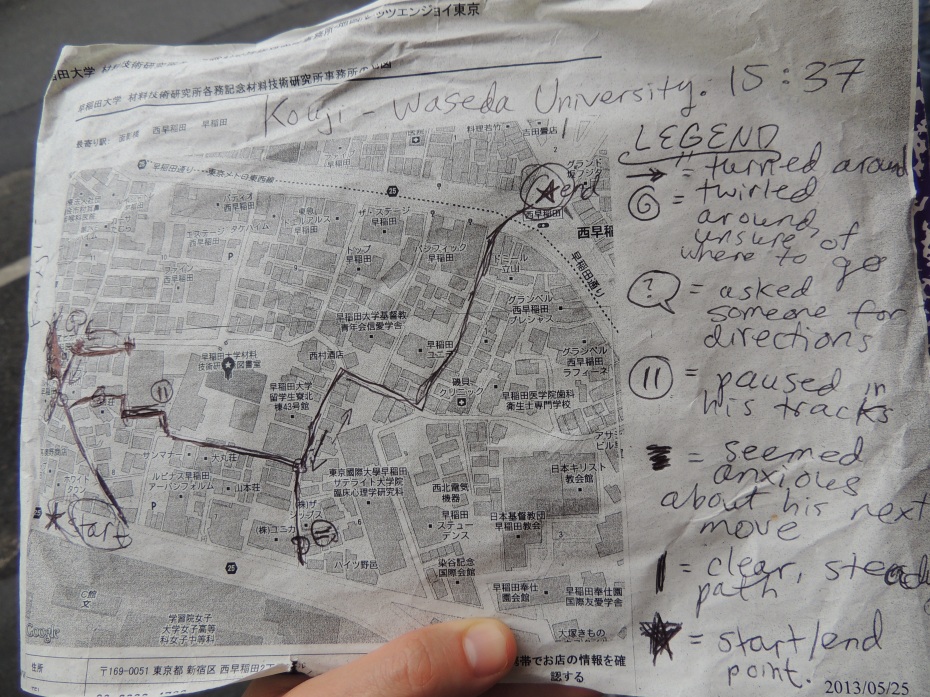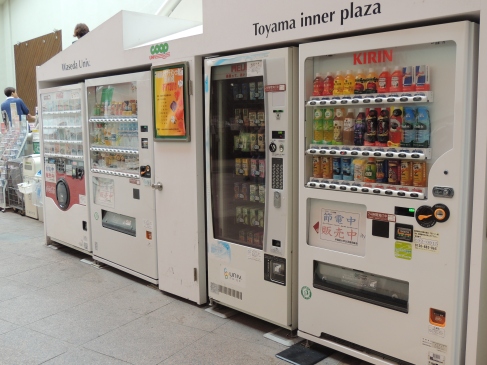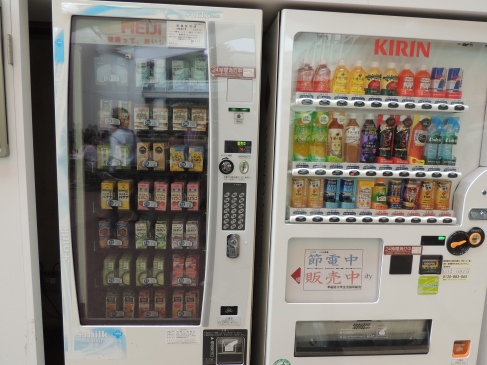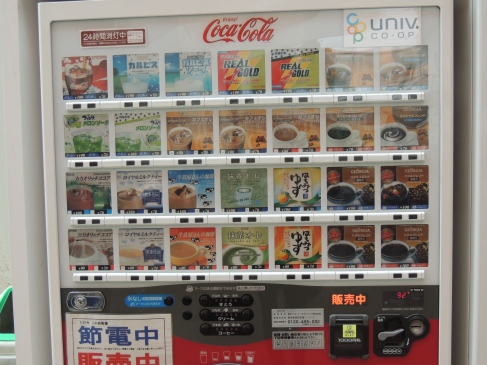May 31, 2013
Field Notes.
At the beginning of our day trip to Kamakura this morning, Christine, Angelica, Nicole and I became very anxious. No matter how many times we stared at our maps and brochures, we couldn’t figure out where the bus for the Hokokuji Temple and Bamboo Garden stopped. Worse yet, we had limited time, as Christine and Angelica also hoped to visit temples, shrines, caves, and of course the Kamakura Diabutsu in just a few short hours. After asking multiple locals for directions, we eventually figured it out, the stress of the frenzy still thumping our heartbeats.
All became calm, however, as soon as we arrived at the Bamboo Garden. The towering bamboo cooled our sweating backs, and birds delightfully greeted us with their song-like chirps. Even the caffeinated green tea, handmade for us under a shelter deeply hidden in the trees, bestowed bliss upon the four of us. The stress of the morning simply melted into thin air.
This incident triggered my awareness of how the beauty of nature, and rural space in general, can truly impose a profoundly peaceful effect upon its dwellers. I reflected, once again, upon how rural space within urban spaces can be utilized to produce efficiency in urban citizens. Indeed, we finished the remainder of the day without an ounce of anxiety obstructing our path. The day’s expectations were carried out relatively efficiently and as planned, only after spending some time relaxing in the great outdoors.
